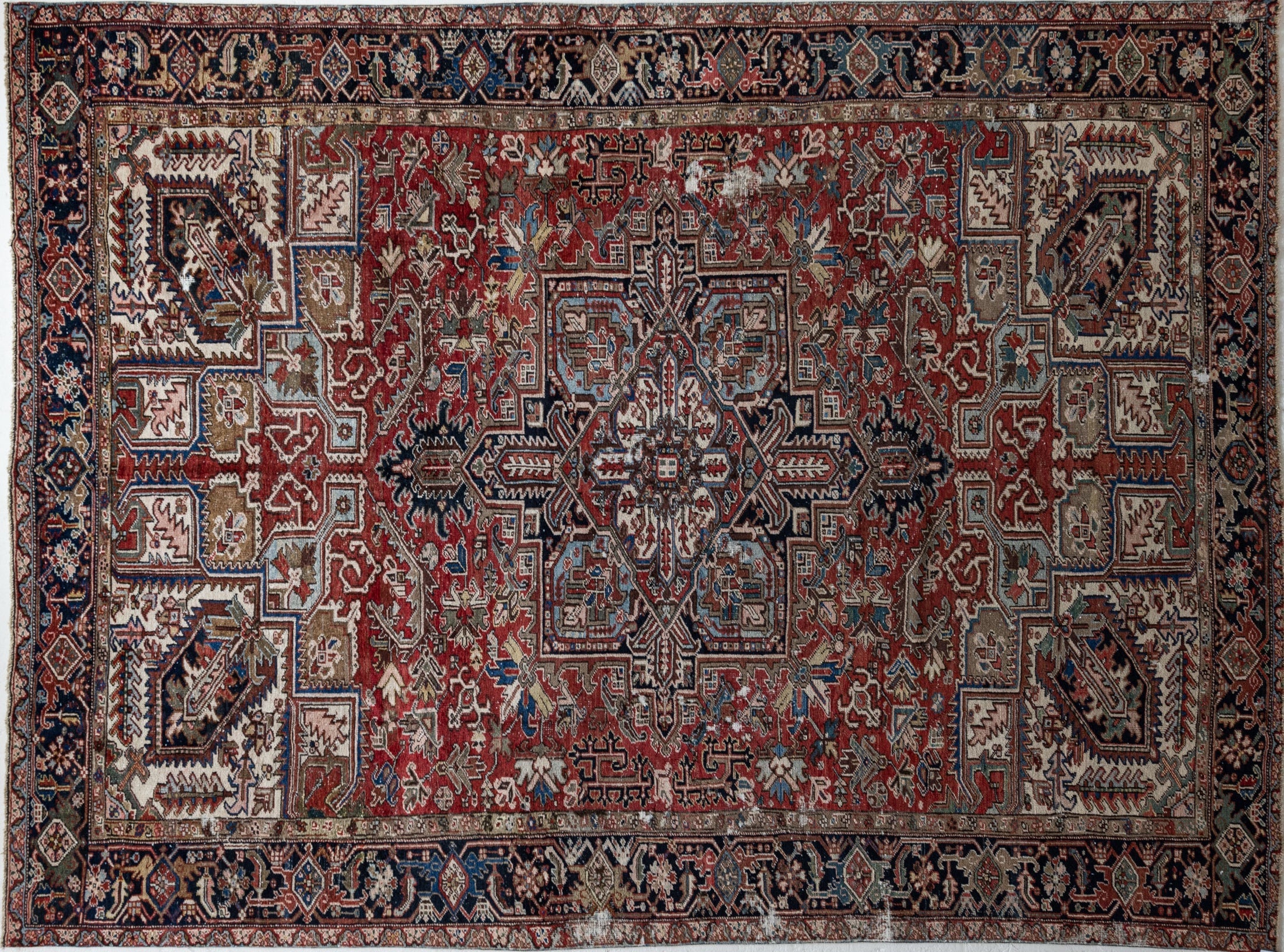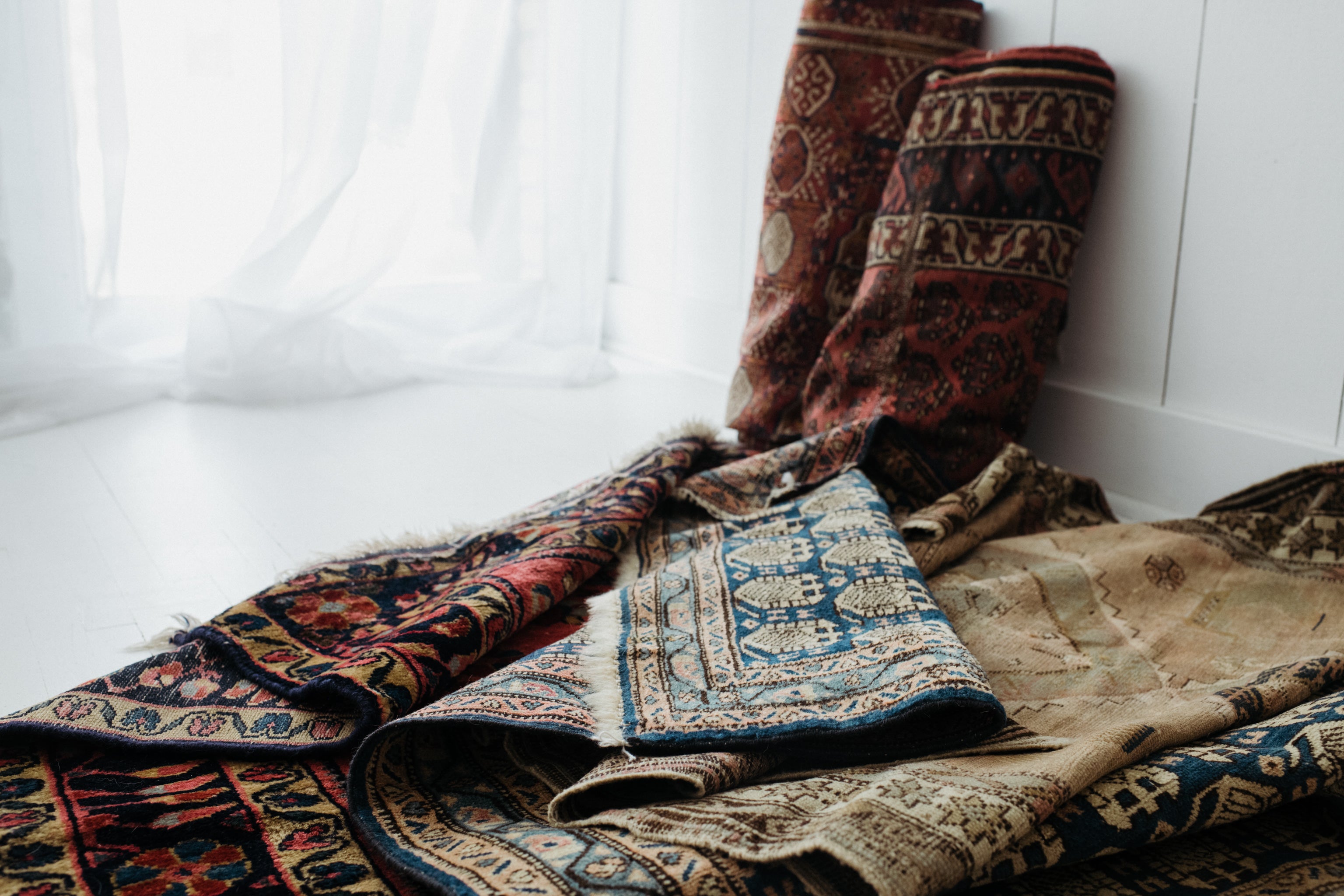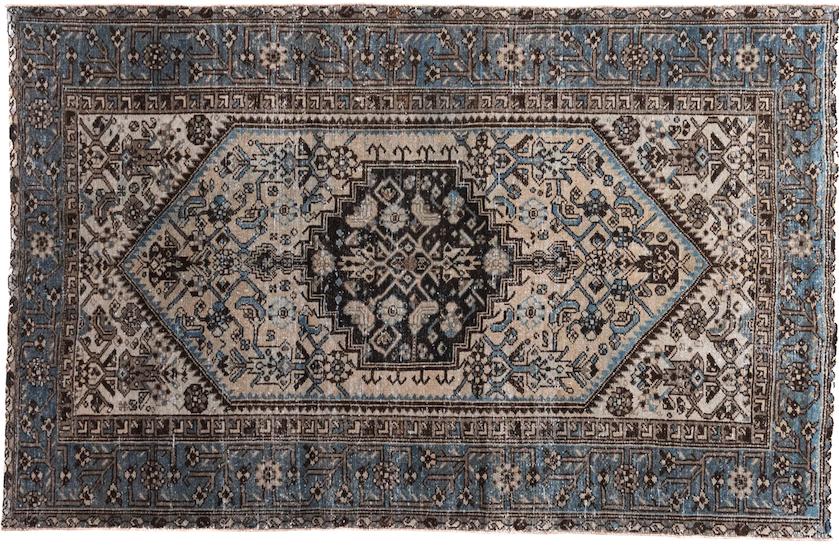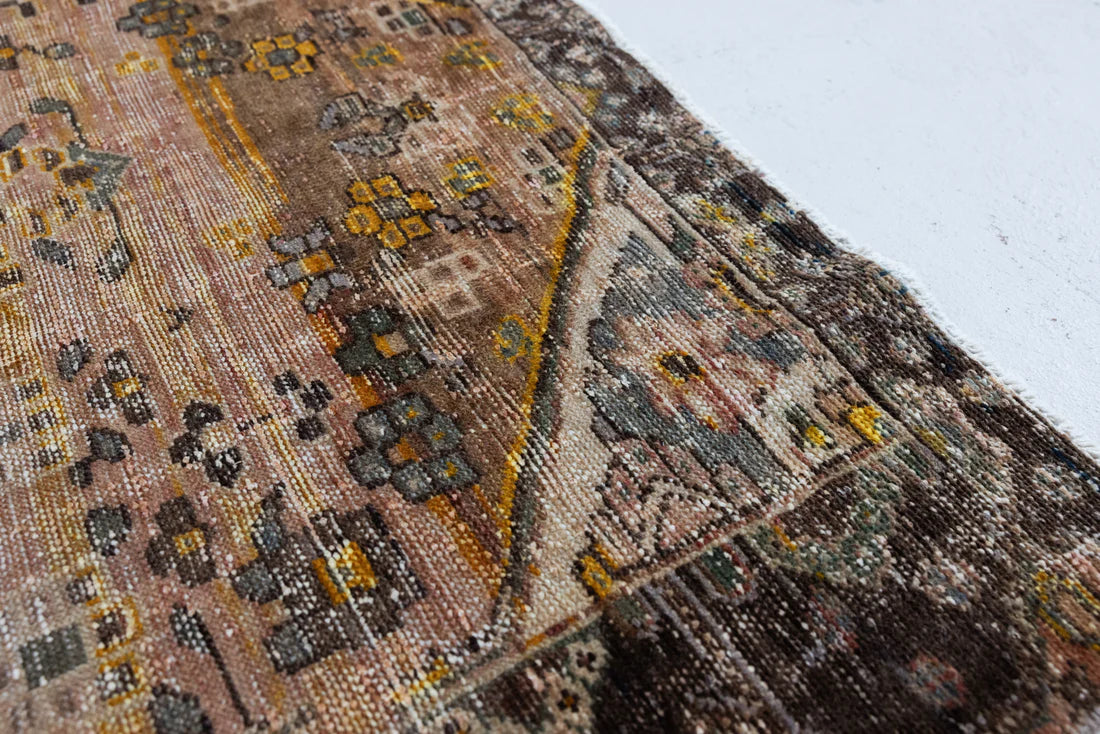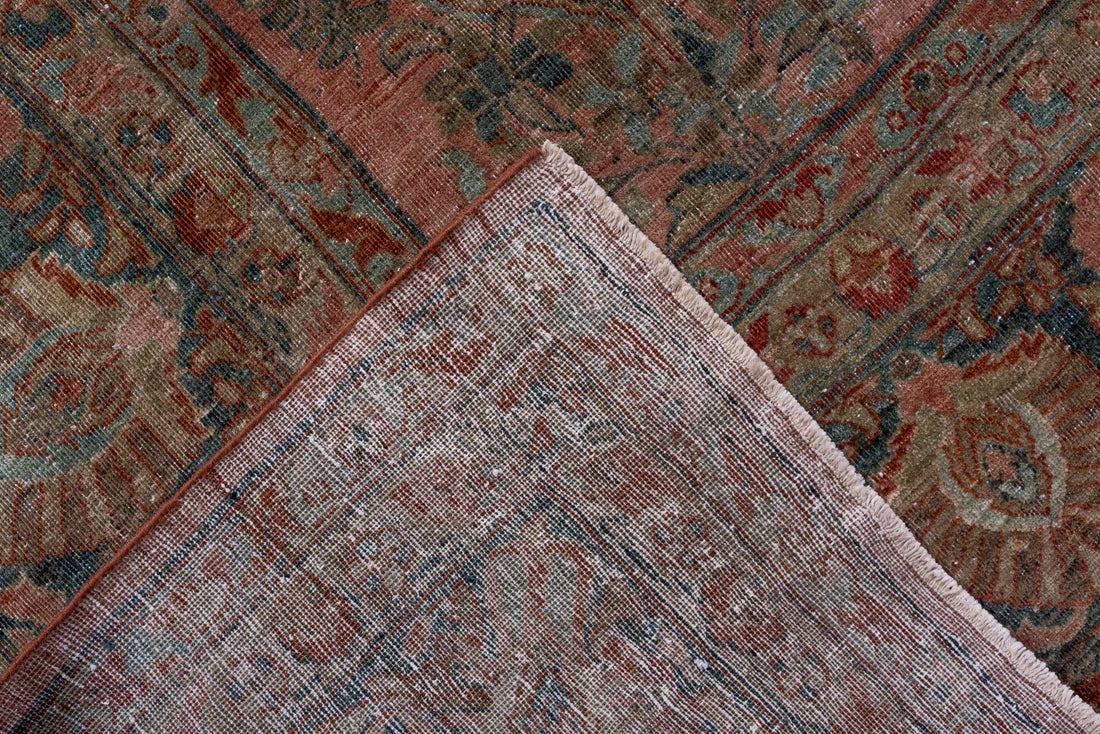Oushaks, Kilims, Bidjars, Malayers: there are so many different kinds of vintage rugs it can be hard to keep the styles straight! Among the many questions we receive about different kinds of vintage rugs, the one we hear most frequently is what's the difference between Turkish and Persian rugs?
We are going to break it down for you so you really understand what makes the two styles unique and why you might want one over the other.
Persian Rugs

Persian Bidjar, c. 1950
Persian rugs are hand-knotted rugs made in Iran. The designs are often quite intricate, and to achieve this look, there is typically a higher knot count per square inch in comparison to a Turkish rug.
Below is a Persian Heriz rug from the 1960s. As you can see, the designs are complex, which requires a higher knot count to achieve. Accordingly, the price of Persian rugs is typically higher than Turkish rugs. Persian rugs take an immense amount of time to hand-weave, but the effect is beautiful.

Here's a closer look at the details:

You can see how intricately woven this rug is, and while you can't count them, you can get an idea of just how many knots it has. A Persian rug is regal and elegant, and you'd put a Persian rug in any space you want to elevate.
Many rugs, both Turkish and Persian, are named after the region from which they come. The rug at the top of this post, as an example, is a Persian Bidjar, which comes from the Kurdish town of Bidjar in western Iran. The rug immediately above is a Heriz, which is a district in the northwest region of Iran. Designs differ slightly from region to region as well.
Here's a brief list of regional differences:
- Tabriz - Tabriz rugs come from the northwestern region of Iran, one of the oldest weaving centers in the world, and often feature a medallion in the center of the rug. (Example.)
- Bidjar - These rugs are woven by Kurdish craftsmen and women in Bijar, Iran. These rugs are very tightly knotted, resulting in a robust, durable piece. (Example.)
- Mahal - These are intricate rugs tied with asymmetrical Persian knots. The wool used in these rugs is often hand-died with vegetables, which gives them their vibrant colors. (Example.)
- Malayer - Malayer rugs are woven with symmetrical knots and are named after the city in which they originated in western Iran. Floral motifs are common in these beauties. (Example.)
Turkish Rugs
Turkish rugs typically have fewer knots per inch than Persian rugs, making Turkish rugs a more accessible entry point to owning a handmade rug.
While Persian rugs are typically more intricate and elegant, Turkish rugs lean toward more straight lines, floral motifs, and overall funkier designs. These rugs can be so fun!

Here's a Turkish Anatolian from the 1970s. The designs are less intricate than the Persian rugs above, but there is still a ton of detail. Straight lines and tribal designs are typical of rugs from the Anatolia region of Turkey.
The rug below is a Turkish Oushak from the 1970s, which comes from the Oushak region of Turkey, just south of Istanbul. Oushaks often feature floral motifs with small vines and medallions along the border. The field of this rug is a dark ivory, which is another indication that the rug is an Oushak.

A higher knot count doesn't mean a Persian rug is structurally more sound than a Turkish rug. Both styles are very strong and durable, which enables them to last for generations.
Here are the two most popular Turkish rugs:
- Oushak - Named for the region in Turkey in which these rugs are made, Oushaks are hand-knotted rugs that often feature motifs like florals or birds.
- Anatolian - These rugs are made in the eastern region of Turkey, which borders Asia. They often feature tribal designs and motifs, with lots of straight lines and angles.
The primary differences between Persian and Turkish rugs are the knot technique and designs. (For some great visuals about the difference between knot techniques and knot count, check out this article.) The simplest way to remember the difference is that Persian rugs have a higher knot count due the more intricate designs, and Turkish rugs have a lower knot count and feature more tribal or floral designs.
Because of the higher knot count, Persian rugs are more expensive than Turkish rugs. Both rugs are beautiful and you cannot go wrong with either choice!

